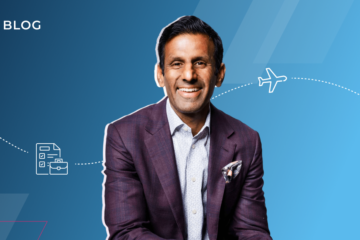
“If I have seen further it is by standing on the shoulders of Giants.”
That’s a pretty humble statement from the man who invented calculus. But Sir Isaac Newton had a point when he wrote that famous quote in 1675. Individuals have made incredible contributions to the store of human knowledge—but did they really do it alone?
Like, let’s say Newton had become a farmer instead of a scientist and mathematician. Would our species have ever devised a methodology for calculating integrals?

We already know the answer to that question, because modern calculus was independently created around the same time (if not earlier) by Gottfried Leibniz. And neither developed their systems out of whole cloth either! As Newton wrote, they “stood on the shoulders of Giants.” In the U.S. especially, we tend not to give due credit to the incredible mathematical advances made by Islamic scholars during the medieval period, or even earlier in China—all of which (and many more!) became the basis for Newton and Leibniz’s discoveries.
Okay, so why are we talking about this?
I don’t claim that the techniques we’re inventing and honing in the Customer Success Movement are on the same scale of significance as calculus or the laws of thermodynamics, but I do believe what we’re creating together is significant in its own way. We stood on the shoulders of Giants, and bit by bit, we’re influencing the way global markets function.
Obviously there’s push and pull. Technology has enabled new ways of doing business. We react to those changes, but we also shape them. When you think of yourself as part of a continuum of knowledge as opposed to something ephemeral, or worse—meaningless, you can start to see the impact of the choices you make.
I saw that continuum in action recently at the Pulse Executive Retreat—an incredibly intimate event we hosted for less than a dozen of the top CCOs and customer success leaders in the world. (Genesys, Sitecore, Pearson, Kronos, Slack, PTC, ADP, Instructure, RealPage, and Zendesk.) It was so inspiring and humbling to see how innovative each one has been in their organizations—but also to see how their innovations are also part of larger trends across the industry.
I wanted to outline four strategies these leaders have implemented. I’d also love to hear whether you’re doing something similar as part of this customer success continuum of innovation—or whether you plan on putting these ideas into action at your company.
BUT FIRST! I wanted to highlight the most important takeaway of all. Of the 11 leaders in attendance at the Pulse Executive Retreat, eight of them were women. There’s still a long way to go in pursuit of balance—especially in the software industry. But the customer success industry has tended to be ahead of the curve historically, and I was so excited to see that reflected in the attendance at this event. Like I said, there’s a lot of work to be done, but I think it’s important to celebrate the progress we do make.
Okay—to the learnings!
1. Successfully charging for customer success
This has long been a point of contention within our industry: can you (and if so, how do you) charge for customer success? One company at the retreat presented a working framework. It’s called SuccessPoints, and it’s a program that gives a customer the flexibility to spend their points on a multitude of services—adoption workshops, training, technical services, etc.), they learned two things:
- The services could be deployed by many different teams—Solutions Consultants, Services, CSMs, Support, etc.
- Customers wouldn’t ask for discounts. They had always tended to ask for them with specific Professional Services Scopes of Work (SoWs) or projects.
So the takeaway? If you find yourself giving away a lot of hours of hands-on training or services engagements, you could create a flexible offering that drives better outcomes and doesn’t leave money on the table.
2. Standardizing more metrics
Another company gave a great presentation on their standardized framework to quantify value. They’ve branded their CS team as “Proactive, Personal, Proven.” I really appreciated the move toward more standardization. CS is real, it’s here to stay, and part of that evolution means moving away from ad hoc metrics. When you can benchmark yourself against a broader base of comparable organizations using the same metrics calculated the same way, you can build a much more solid base for incremental improvement.
Just one example: several companies present at the Retreat track the percentage of their customer base that are “referenceable.” It’s a great proxy to know how healthy the customer base is.
Do you track your referenceable customers based on a standardized criteria? If so, I’d love to know your percentage to start getting a sense of the mean.
3. Moving from product-centric to customer-centric models
This trend is near and dear to my heart as a former product manager. There was a superb presentation on how to break down silos between the CS org and the Product org. We believe the future of customer success (not the function—the larger philosophy) is a deeper relationship with the team most directly responsible for enabling the customer’s success—the Product team. Customer Success and Product need to equally “own” it as a common mission and shared goal to strengthen cross-functional bonds and celebrate common wins together.
Read more about Product-Customer Success alignment in this ebook.
4. Getting serious about personal development
Speaking of Product still, in engineering especially, personal development is pretty systematized at many companies. Customer success has in some cases lagged behind, but that’s clearly changing. Leaders at the Retreat shared how they were offering professional development days on a quarterly basis to just learn—read a book, take Udemy courses, sign up for live courses, go spend time with a customer to learn more, etc.
Or they were using a profile test (like MBTI or several others) to see where there were gaps in their leadership teams or to learn how to work better (or give feedback better) to teammates. And those leaders were increasingly sharing their 360 feedback with their entire team.
—
So what do you think? Do these learnings resonate with you? I’d love to hear more—especially as we continue to hone the content at our big Pulse event in May. (We’ll be honing until the last possible moment, trust me!) These are exactly the kind of strategy-focused topics we’ll be putting front and center at the conference, and I’d love to get your thoughts on it. You can either comment below or email me directly—after all, the view is so much better from up on the shoulders of giants!



